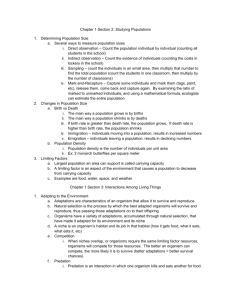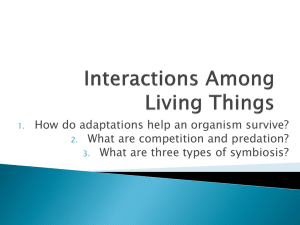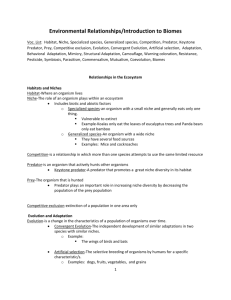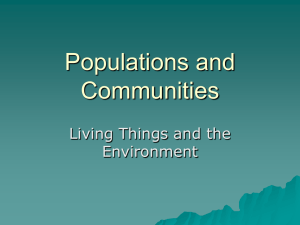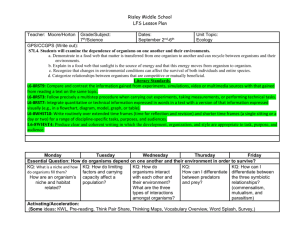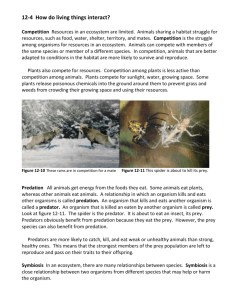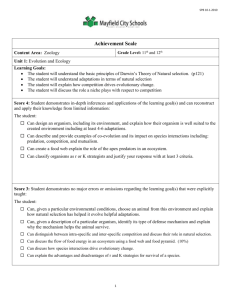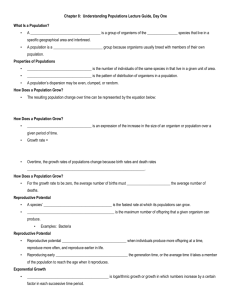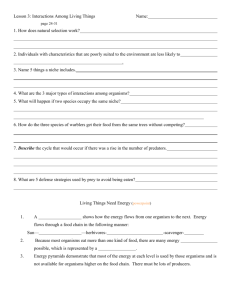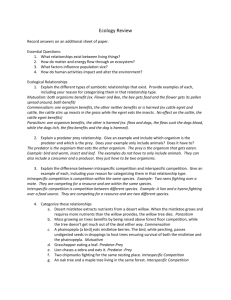notes
advertisement
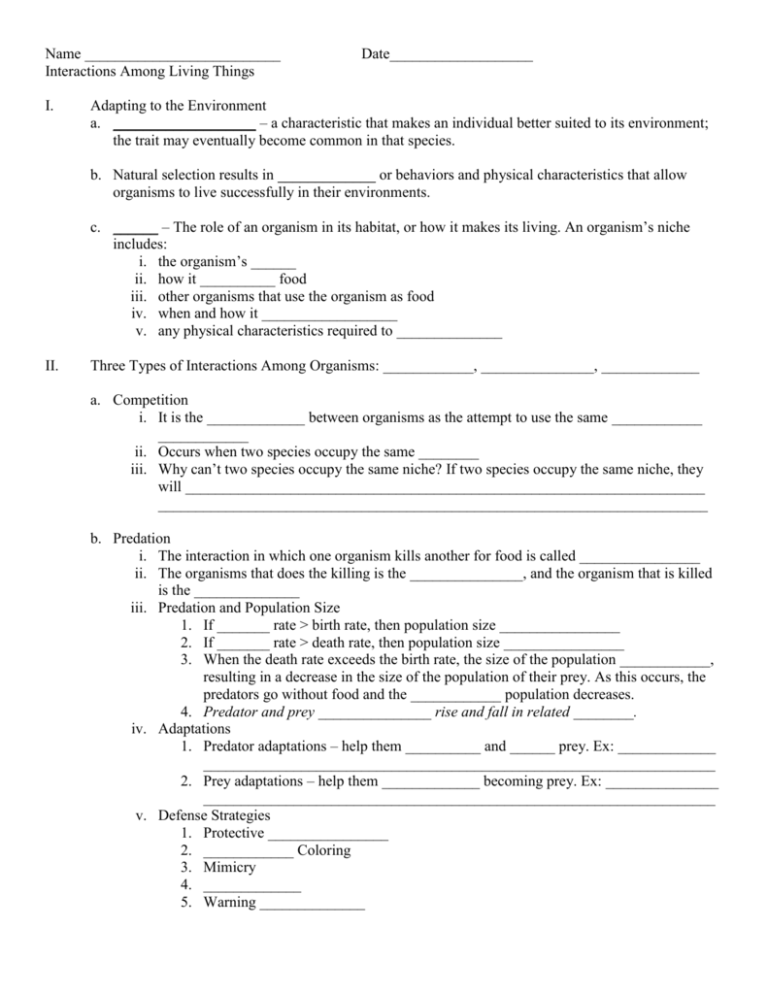
Name __________________________ Interactions Among Living Things I. Date___________________ Adapting to the Environment a. ___________________ – a characteristic that makes an individual better suited to its environment; the trait may eventually become common in that species. b. Natural selection results in _____________ or behaviors and physical characteristics that allow organisms to live successfully in their environments. c. ______ – The role of an organism in its habitat, or how it makes its living. An organism’s niche includes: i. the organism’s ______ ii. how it __________ food iii. other organisms that use the organism as food iv. when and how it __________________ v. any physical characteristics required to ______________ II. Three Types of Interactions Among Organisms: ____________, _______________, _____________ a. Competition i. It is the _____________ between organisms as the attempt to use the same ____________ ____________ ii. Occurs when two species occupy the same ________ iii. Why can’t two species occupy the same niche? If two species occupy the same niche, they will _____________________________________________________________________ _________________________________________________________________________ b. Predation i. The interaction in which one organism kills another for food is called ________________ ii. The organisms that does the killing is the _______________, and the organism that is killed is the ______________ iii. Predation and Population Size 1. If _______ rate > birth rate, then population size ________________ 2. If _______ rate > death rate, then population size ________________ 3. When the death rate exceeds the birth rate, the size of the population ____________, resulting in a decrease in the size of the population of their prey. As this occurs, the predators go without food and the ____________ population decreases. 4. Predator and prey _______________ rise and fall in related ________. iv. Adaptations 1. Predator adaptations – help them __________ and ______ prey. Ex: _____________ ____________________________________________________________________ 2. Prey adaptations – help them _____________ becoming prey. Ex: _______________ ____________________________________________________________________ v. Defense Strategies 1. Protective ________________ 2. ____________ Coloring 3. Mimicry 4. _____________ 5. Warning ______________ c. Symbiosis i. Organisms within a community _____________ with each other in many ways. Some are predators, some are prey. Some compete with one another, some _______________. Some species form ______________ relationships with other species. ii. There are ___________ major types of symbiotic relationships. 1. _________________: Both organisms benefit. 2. _________________: One organism ___________, the other is unharmed. Ex: The Human eyelash and the Demodicids, which are ____________________________ _______________________. Humans provide them with ____________________. 3. _________________: One organism benefits, the other is ______________. Ex: The Hornworm ________________ and the Braconid wasp. The caterpillar is the __________, and as the wasp larva consume the caterpillar, the larvae are the ___________. Ex: The leech obtaining its nutrients from a ___________. Ex: The hookworm obtaining its nutrients from a _____________ _________________. Here’s a way to help you remember the different types of symbiosis: Mutualism - ______ organisms benefit, or are happy in the relationship Commensalism – one organism benefits or is happy, and the other is _______________, neither happy or hurt in the relationship. Parasitism – one organism ______________ or is happy, and the other organisms is ______________ or is hurt in the relationship. Let’s Review: Identify the type of interaction in the following examples:

